To bring you up-to-date, this was 20th April 2024. Yes, it is now 27th July and it has taken me 3 months to get here and I still have over 11,000 photos to process but it takes much longer to process when there is a potentially high percentage of possible keepers - much more difficult and time consuming to decide which ones to keep.
So this is the final day in the Ngorongoro Crater and I, for one, was very sad to leave. It started during the trip down the access road where a small party of Little Bee-eaters was sheltering from the early morning rain.
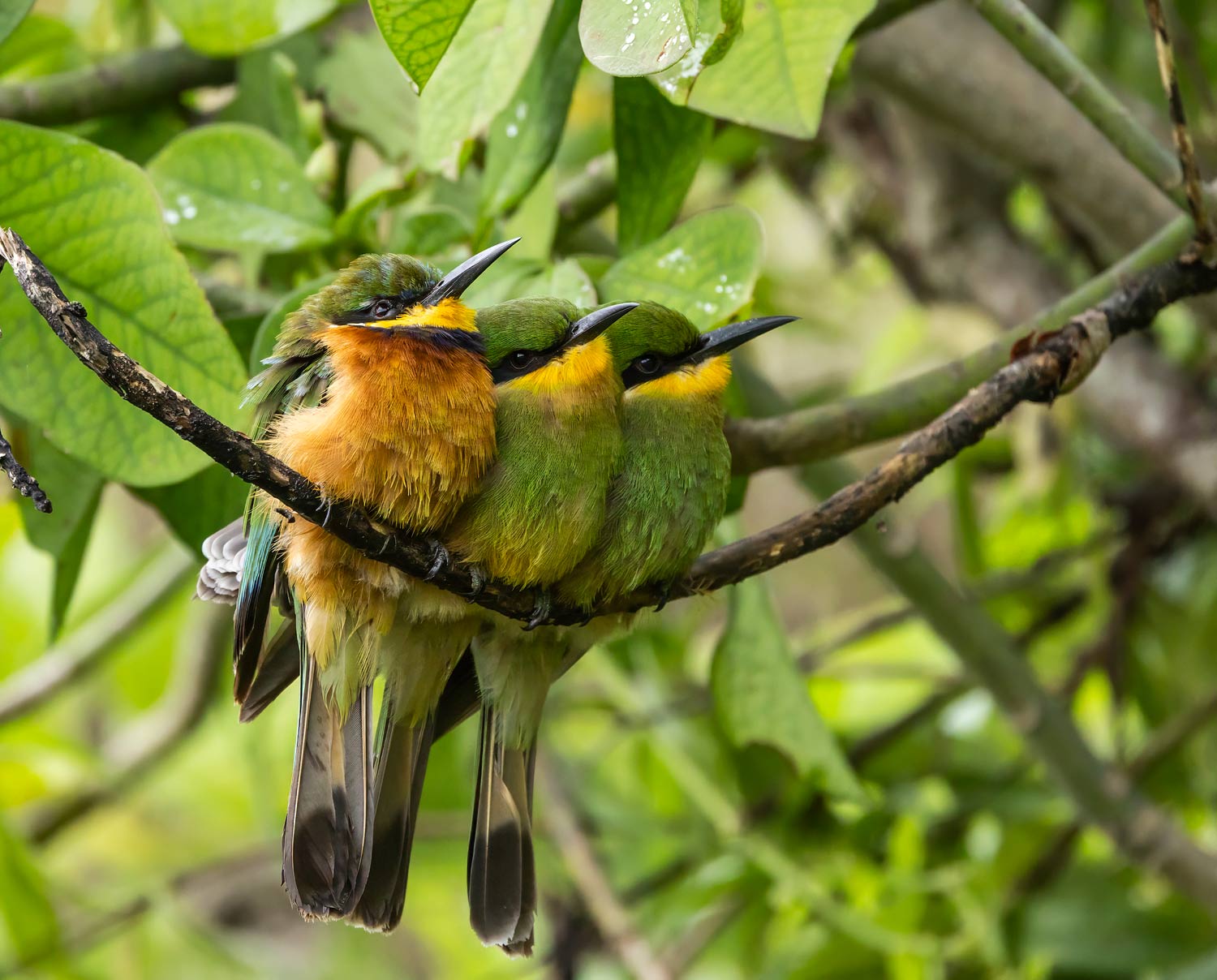
We then went chasing Black Rhinos. Apparently, there are 28 in the crater at the last count, all very heavily protected against poachers, but it is still very difficult to find even one and, when found, impossible to get close enough for a proper photo as the Crater is a reserve where going off track is strictly forbidden. This is the best that I could do - it was about 800 meteres away and, even at 9.00am, heat haze we becoming a problem.

On the drive around, a Marabou Stork appeared, one of the least attractive birds in my opinion.
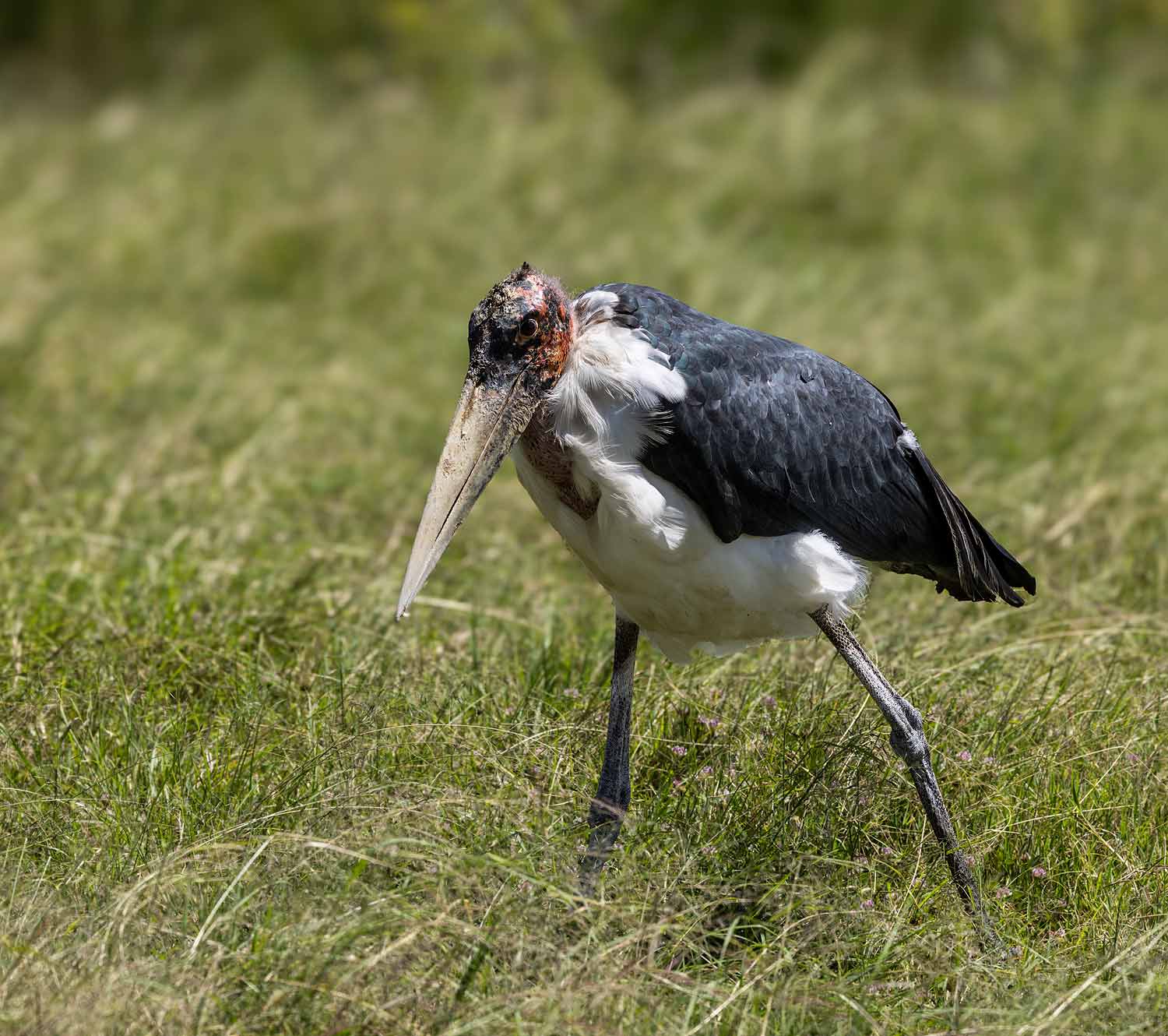
Grey Crowned Cranes were common but a flight shot was a welcome change
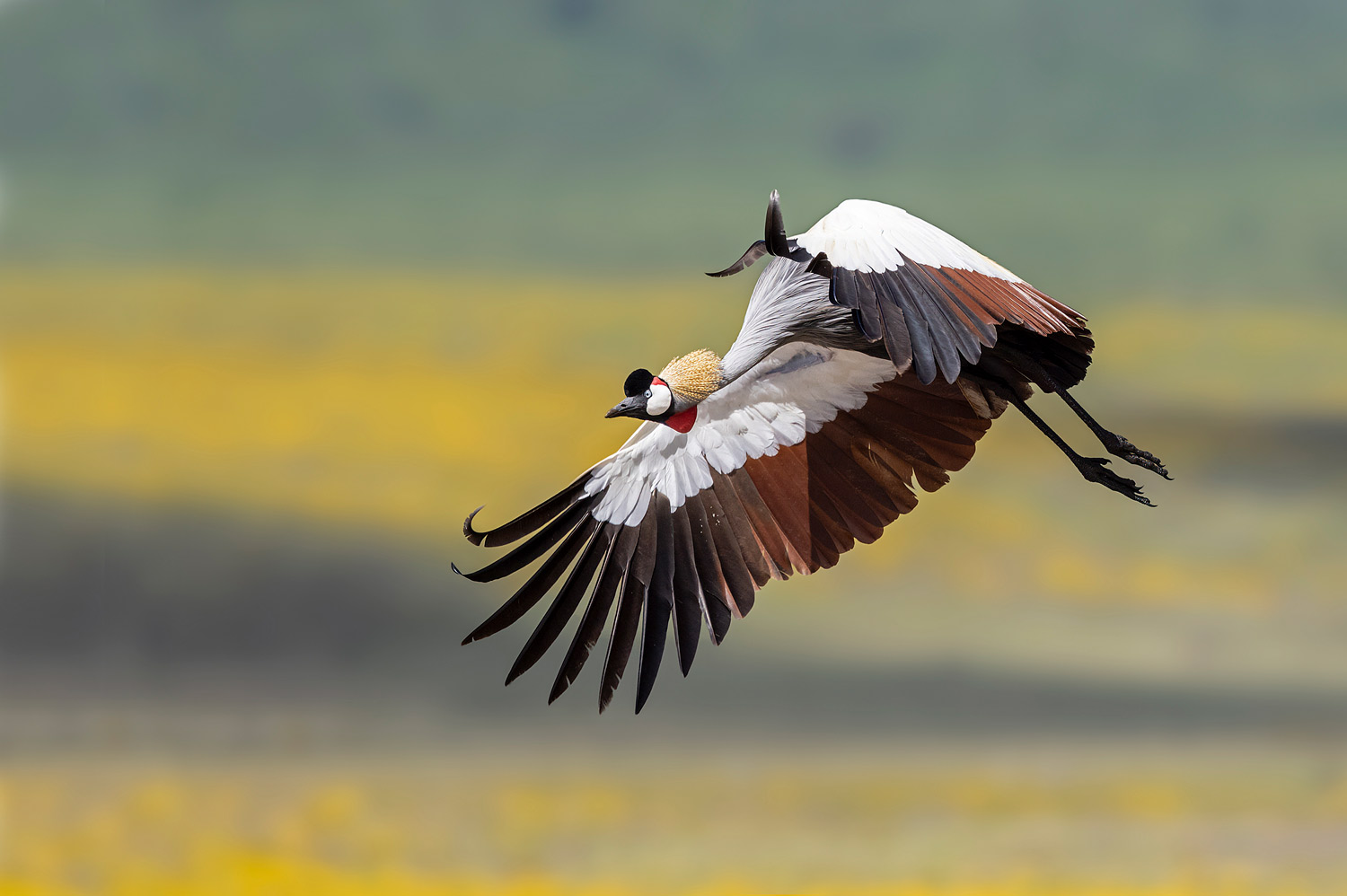
and even with a small family.
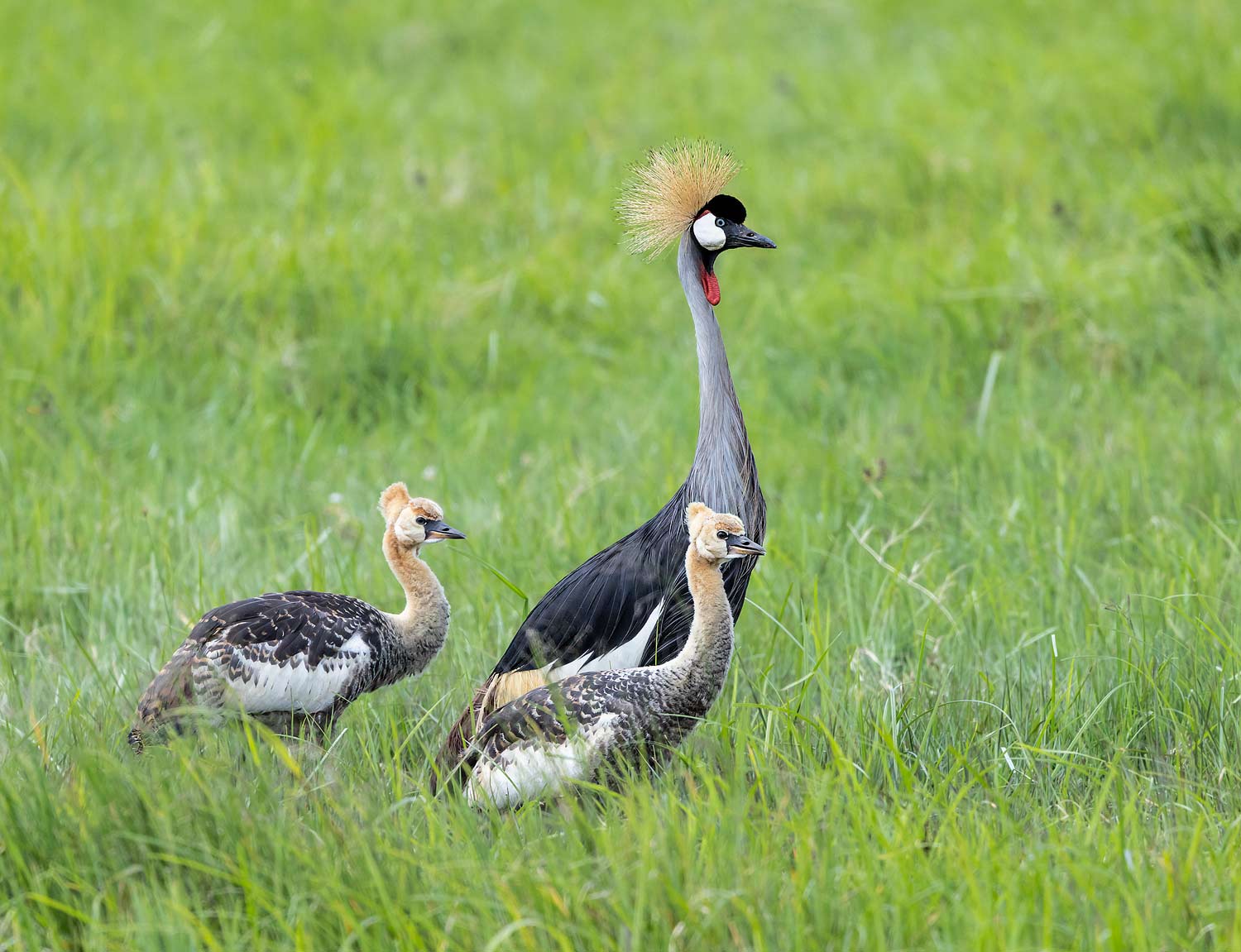
Cape Buffalo were not bothered at all by our presence, in fact, snootily ignoring us - well they are big enough to dominate, especially in a herd of over 100 animals.
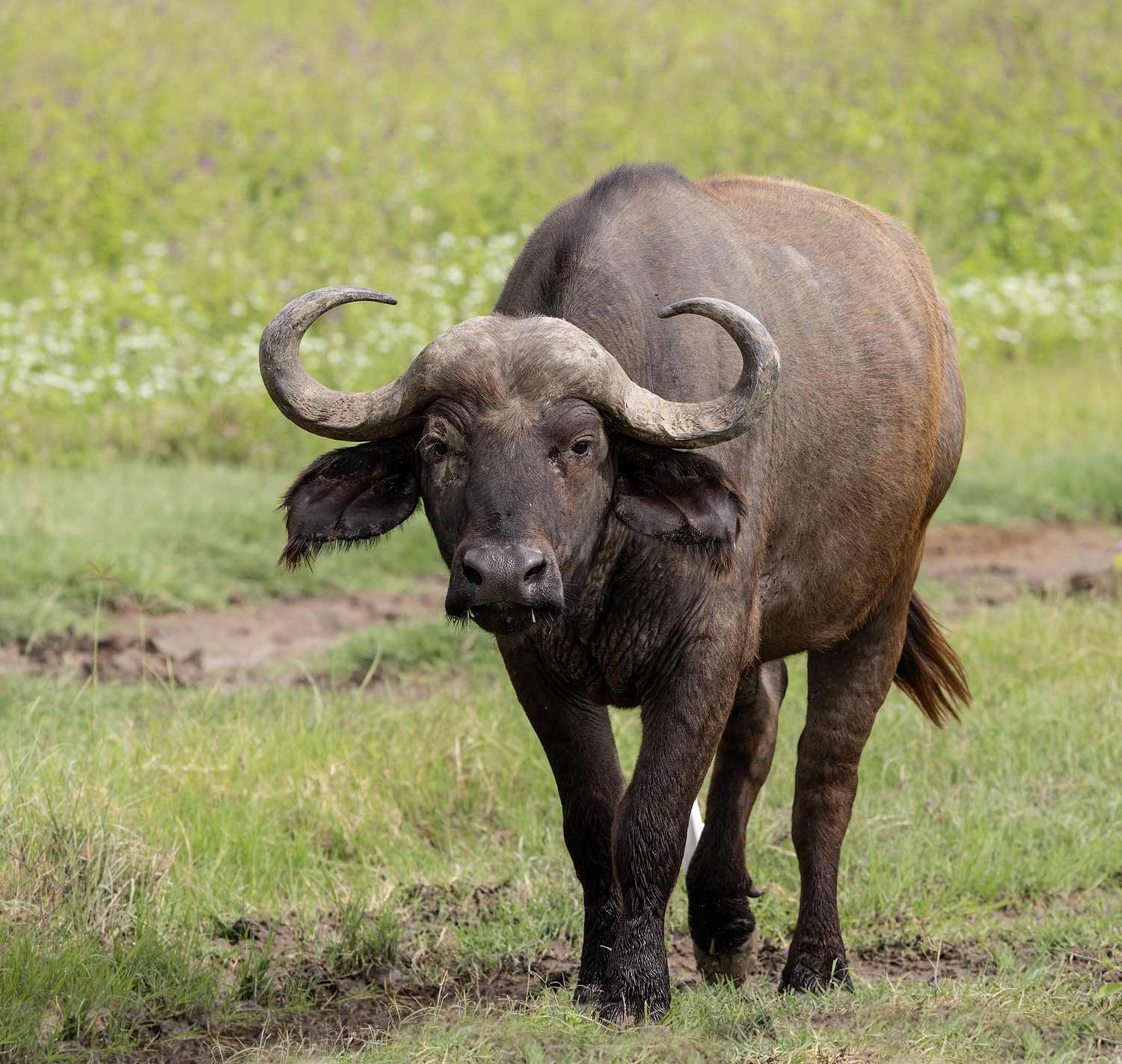
and a close opportunty to photograph the usual attendants, Red-billed Oxpecker.
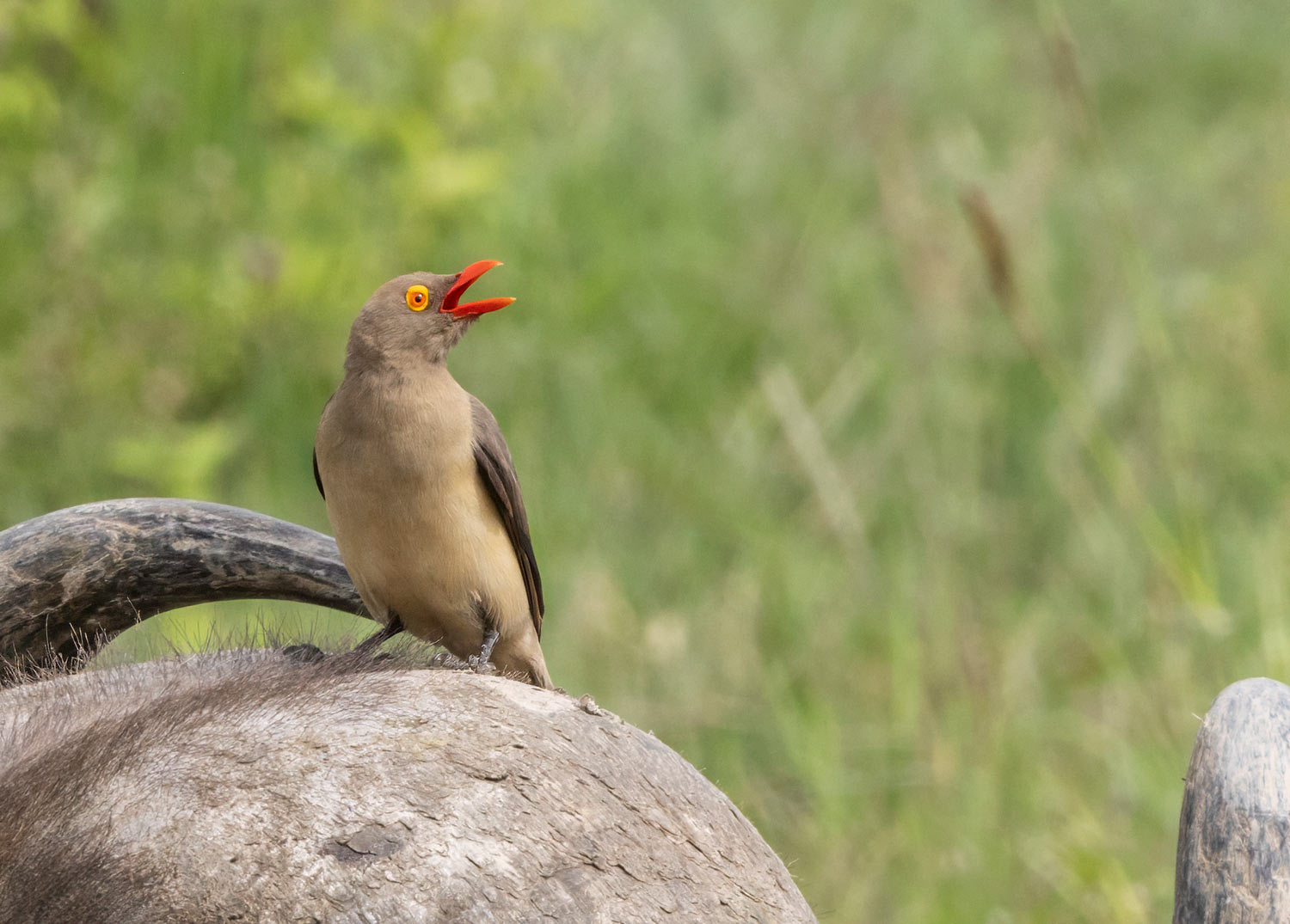
While we were surveying the wetland area, a Yellow-billed Stork flew over to say hello and gave ample opportunity for even more photos of this photogenic species.
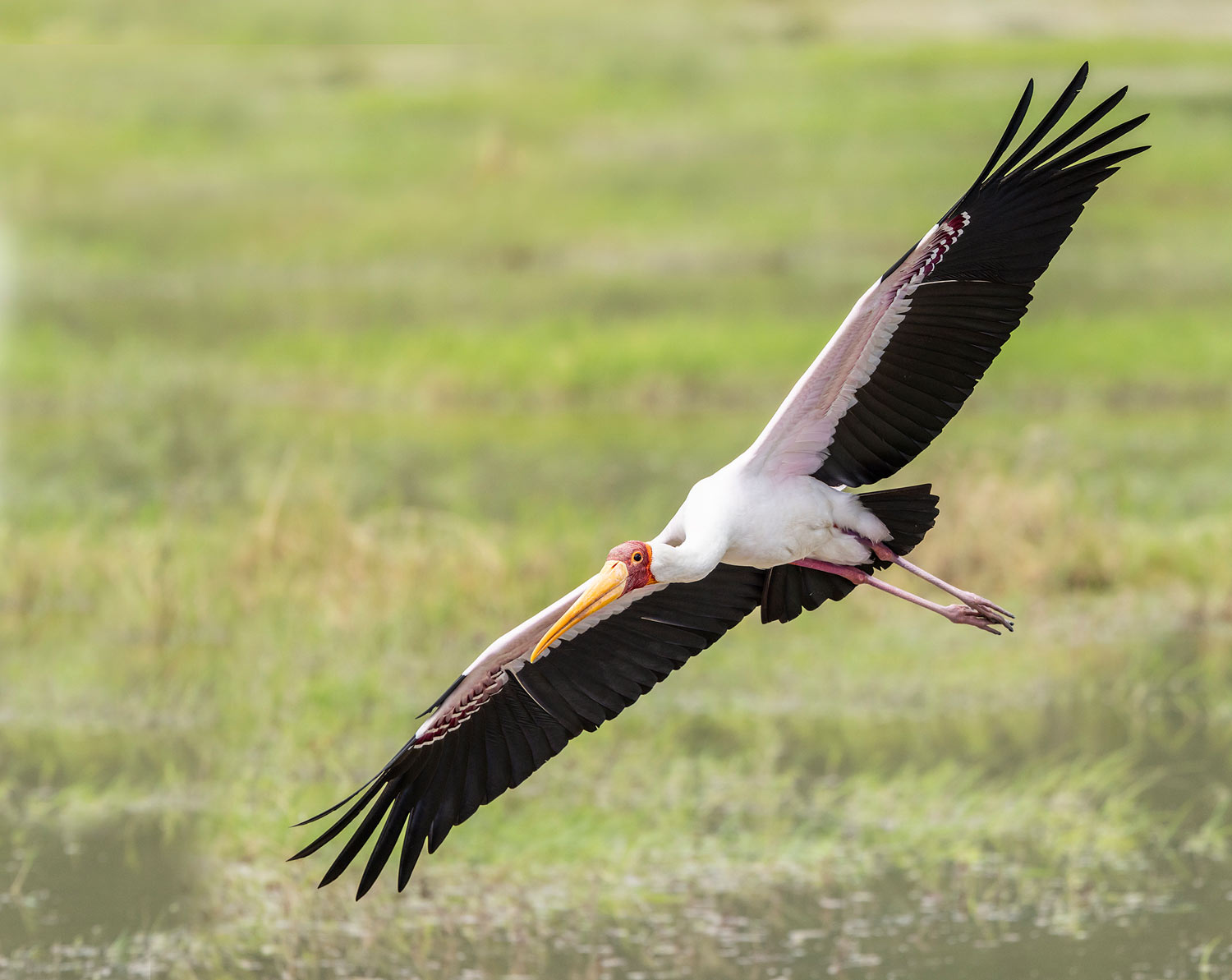
and not so photogenic, but still a curiosity, a Hamerkop on an Acacia bush.
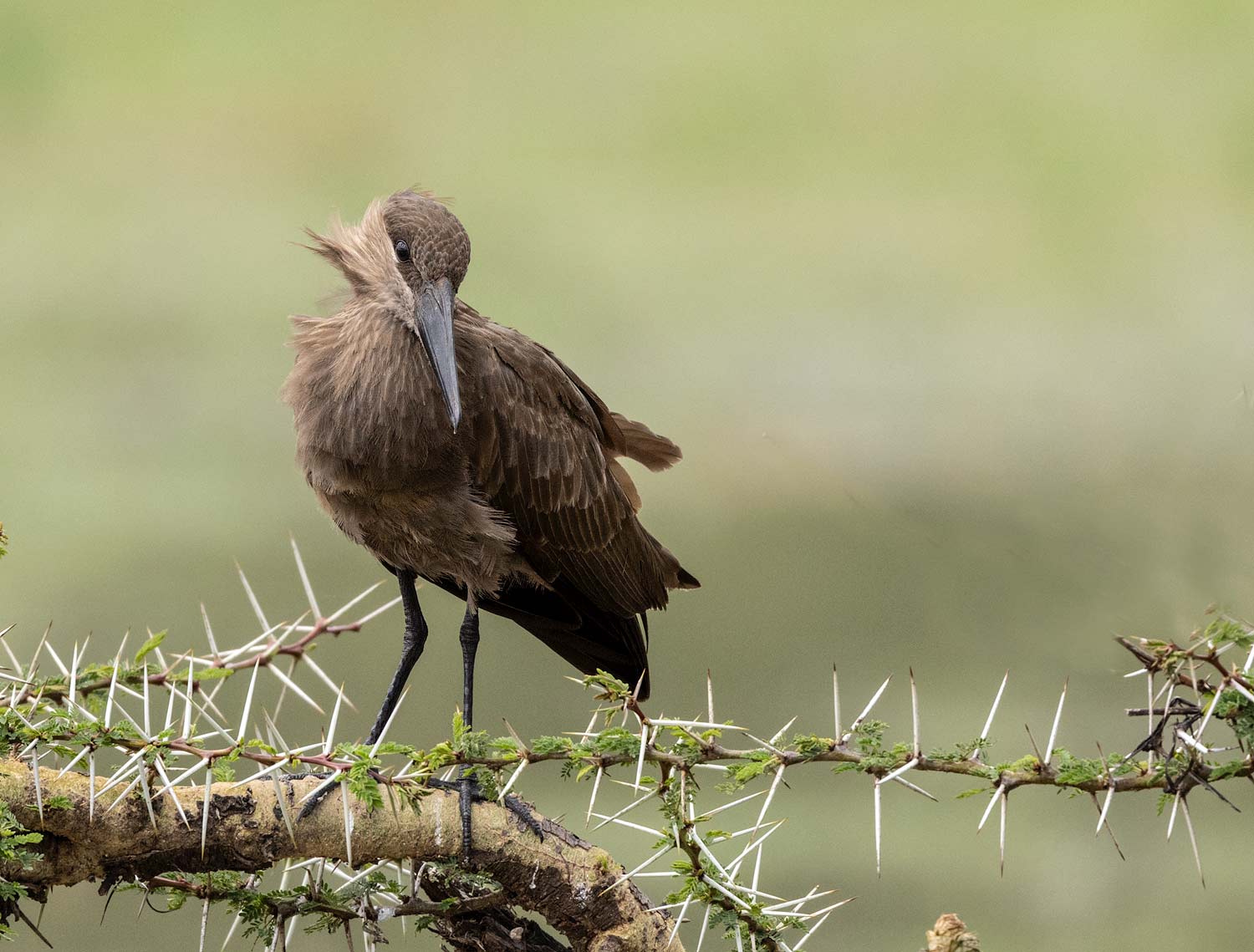
The next curiosity was a pair of Warthogs, busily trying to mate - and finally succeeding after half-an-hour of dancing around.
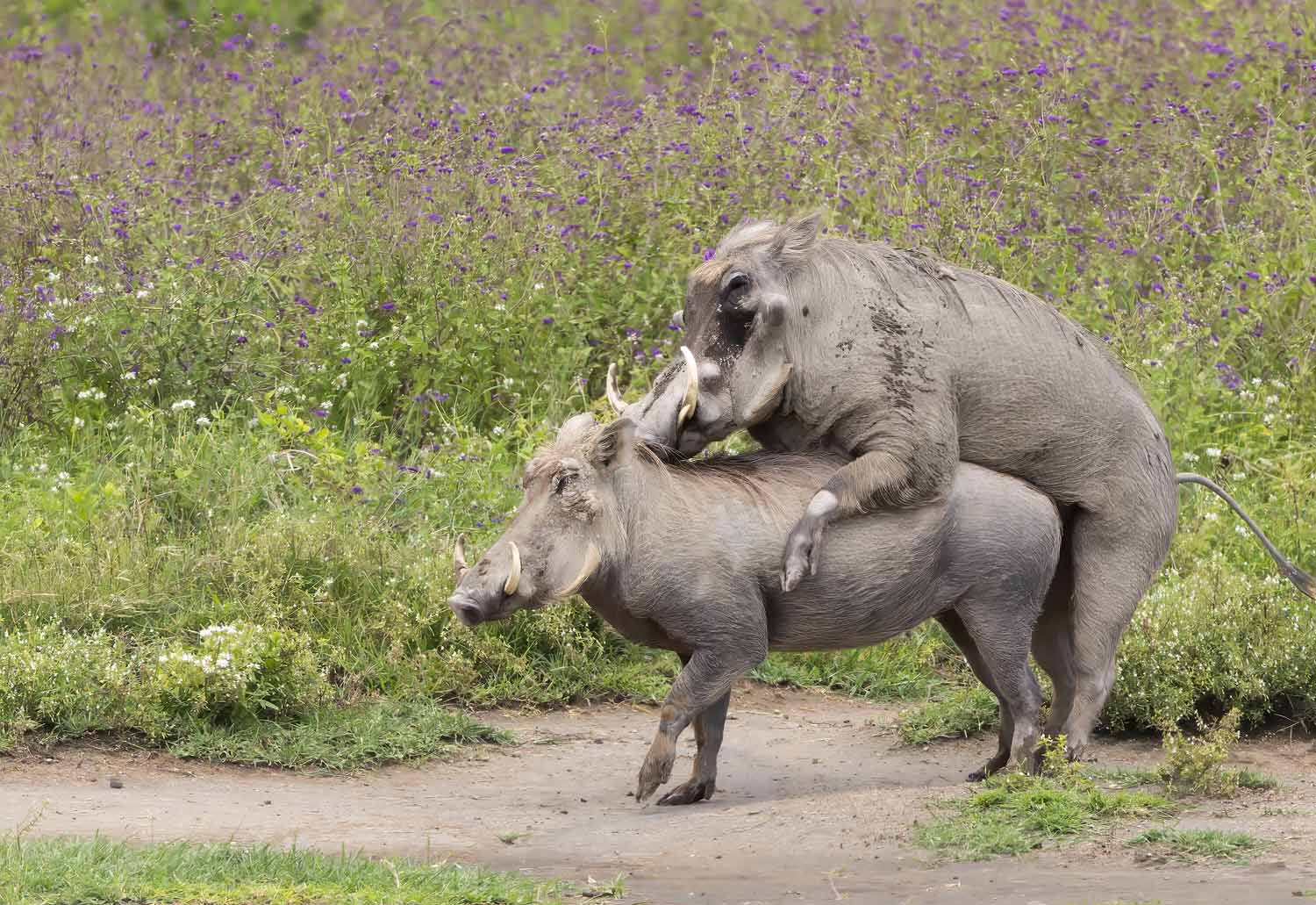
and finally, a whole pack of Spotted Hyena that had killed a Wildebeest, presumably after chasing it into the lake. The feeding was frantic with sentries carefully watching for interlopers.
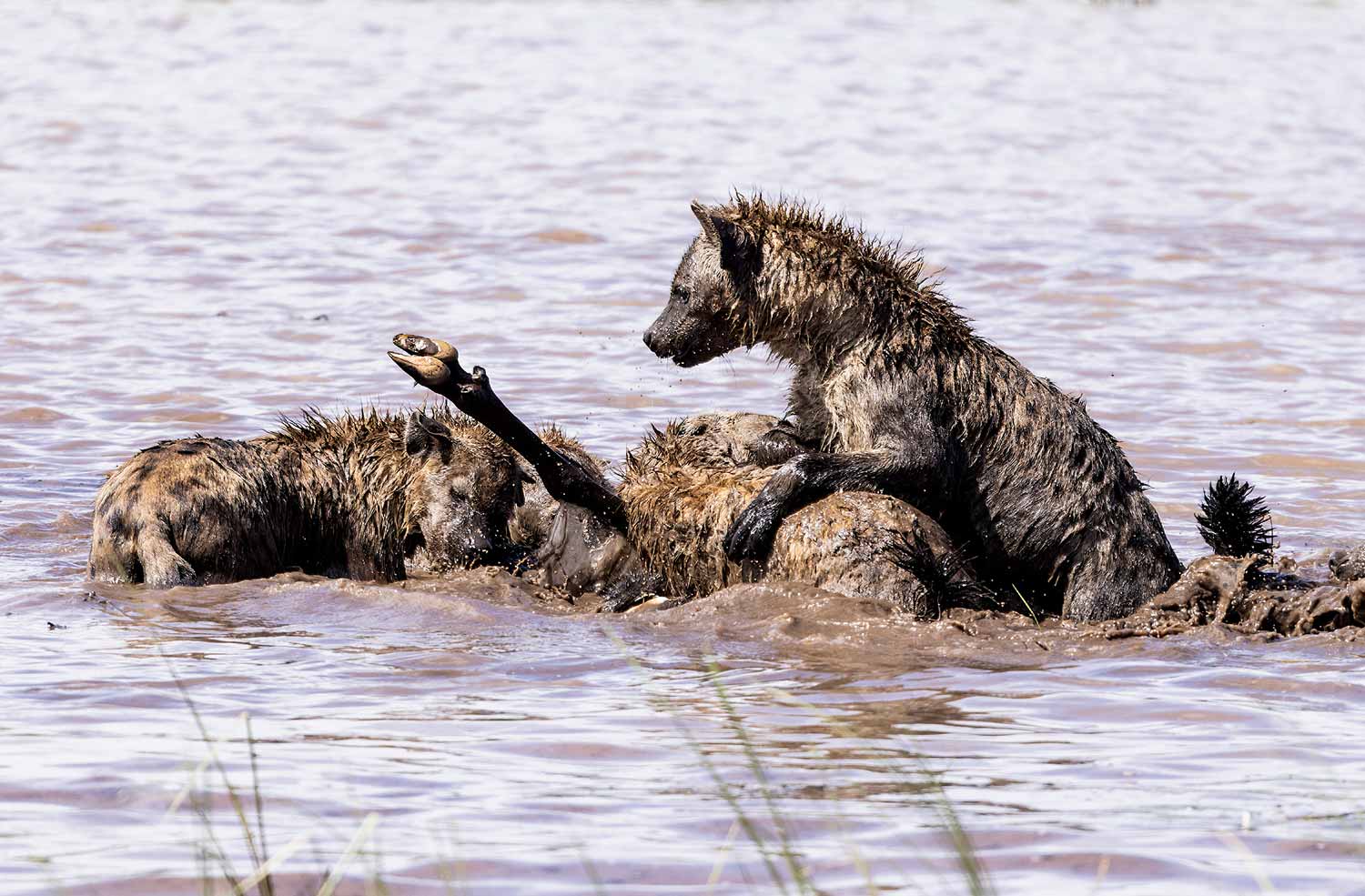
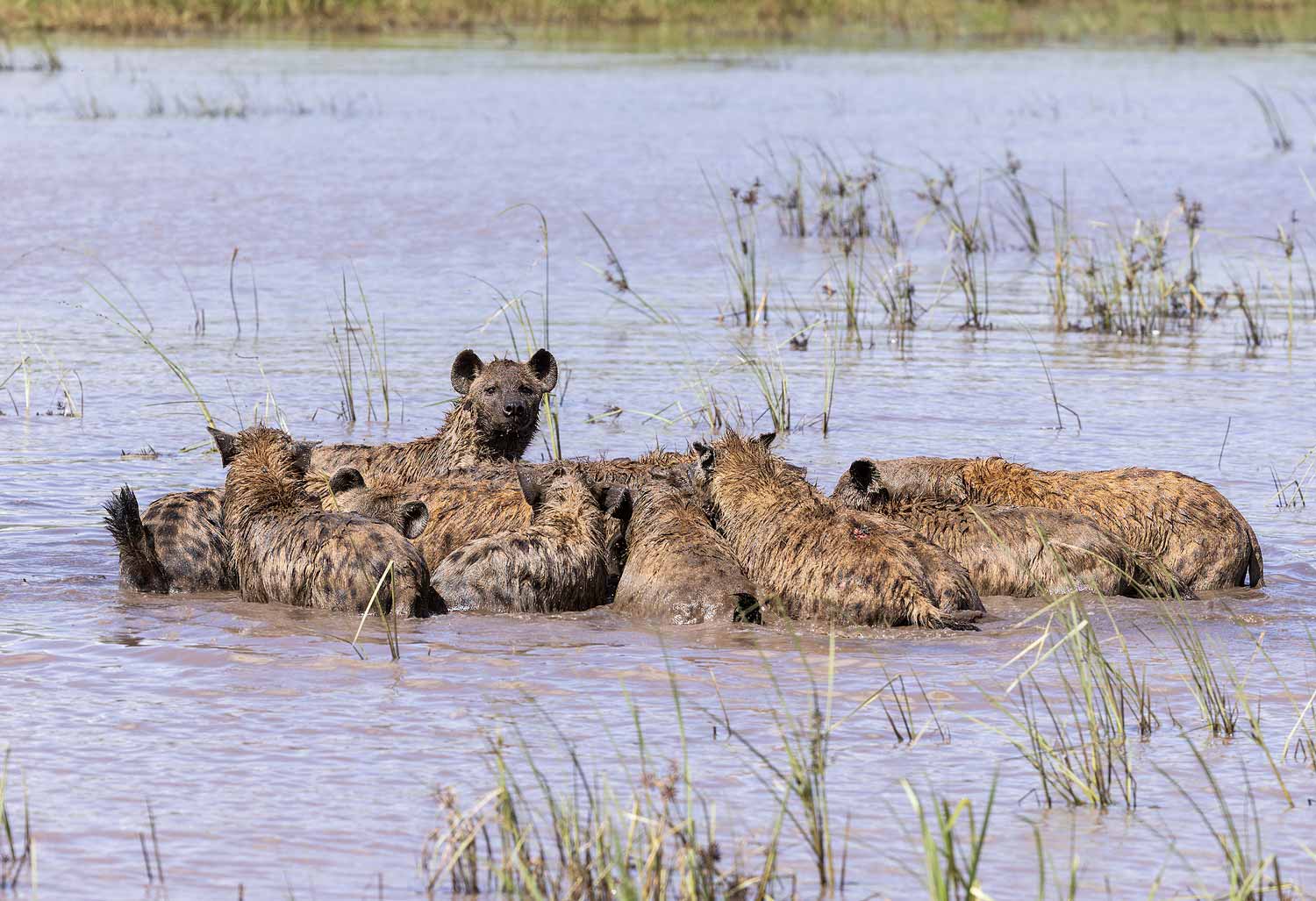
That finalises three days in the Ngorongoro Crater - an amazing spectacle, despite the unusually heavy rainfall during this rainy season. In fact we were very lucky as we heard that, a few days after our departure, the rains were so heavy that the main access track had been washed away.
Next we travel to the Serengeti where new sights and experiences await us but these three days in the Ngorongoro Crater will live with me for ever. Truly, one of the wildlife wonders of the world.
